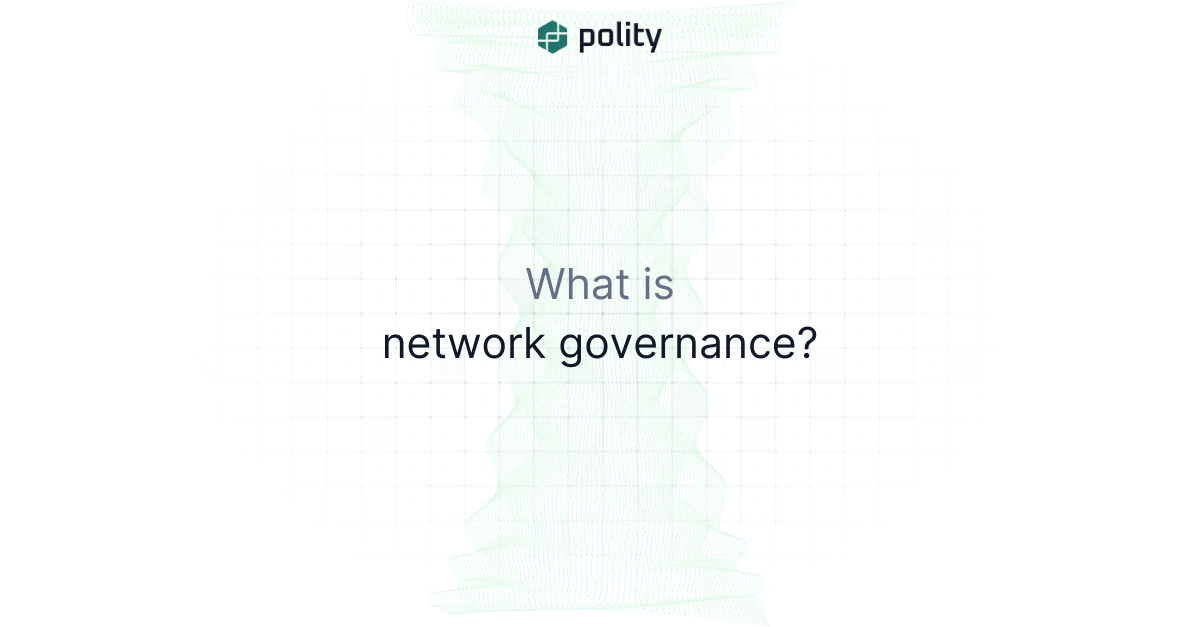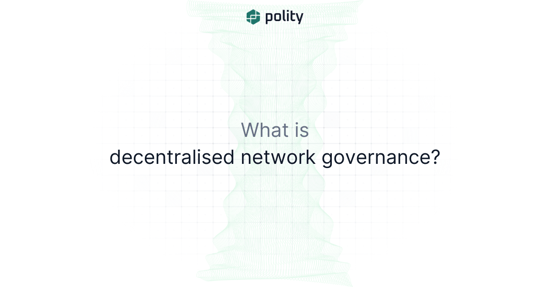Technology is both an opportunity and a threat to businesses.
Technological advancements open new markets on the one hand and disrupt established players on the other. The internet and the ensuing information enable the rapid sharing of information across diverse stakeholders, undermining traditional hierarchies.
Hierarchical organisations, particularly businesses, have had to adapt their governance to these changes. This has given rise to network organisations as a distinct organisational form.
In this article, we will explore what defines a network organisation, its core characteristics, the lifecycle of a network organisation, and what good governance means in a network context.
What defines network governance?
Where hierarchies function based on power and seniority for value exchange, networks use social mechanisms for coordinating and safeguarding the exchanges to reduce transaction costs.
As such, network governance is “the fusion of collaborative public goods and service provision with collective policymaking”.
These self-organising, organisational networks complement markets and hierarchies as governing structures for efficient resource allocation and collective coordination. They are also often a response to complex problems, environmental uncertainty and task complexity.
Networks are typically autonomous, often resisting reforms to encourage competition between members because of the role of trust and mutual adjustment.
Instead, various interest groups or stakeholders in the network share decision-making responsibility and create broad consensus on policies, contributing to the co-delivery of services.
What are the characteristics of network governance?
Hierarchies are defined by vertical relationships, as explored in this article. In contrast, networks function through trust, reciprocity, negotiation, and mutual interdependence among actors. Network actors must collectively engage with each other to share resources, build relationships, and tackle problems.
Five characteristics broadly define network governance: resource dependence, leadership, trust, power and network/collaborative performance.
Resource dependence in network governance
Resource interdependence arises when network actors face complex problems. In such a situation, interdependent actors must exchange resources to achieve common goals .
Resources activate and influence partners, and those with greater resources tend to have high power and collaborative advantage.
Leadership in network governance
Effective leadership, as with all organisations, is essential to effective network function.
Leadership enables network construction, and member empowerment, facilitating communication and interaction. This minimises conflicts, aligns member interests, and builds trust. In turn, this encourages creativity and promotes systematic thinking, which ultimately improves the network performance.
Trust in network governance
Trust is the cornerstone of effective network actor mobilisation, with trust-building, trust-measurement, and quality of trust all playing a role.
Efficient collaboration relies on the network actors and partners effectively mobilising their resources to pursue a shared goal, and this cannot happen without trust.
Trust-building is, therefore, the crucial first step, with reputation and relationship quality both essential for effective network function.
The central role of enduring reputation is another reason why permissionless environments are limited in functionality, as this article explores.
Power in network governance
Power in collaboration stems from authority, resources and legitimacy, with imbalance likely to exist in any form of collaboration since power is always unequally distributed across partners.
Less powerful partners may need to bargain with the more powerful ones to achieve a fair influence on collaborative processes for gaining voluntary acceptance of collective decisions.
Effective network governance relies on managing formal authority (e.g., legitimate right to make decisions) and control over critical resources (e.g., financial and expertise resources).
Performance in network governance
All organisations need to perform, and network organisations are no different.
Owing to the novel structure of network organisations, performance in network organisations focuses on organisational processes and outcomes.
Procedural indicators measure the degree of democracy, deliberation, and trust-building measure process.
Output and outcome indicators assess resource utilisation, efficiency, effectiveness and equity.
Network integration, external control, system stability, trust, coordination approaches and actor generosity also explain network performance.
What is the network governance lifecycle?
Networks, due to their unique structures, have life cycles.
Network success is not necessarily defined by perpetual endurance but by a "healthy and useful life" that requires continuous nurturing .
Governance networks are complex systems that continuously evolve and mature. Network growth takes time, necessitating the cultivation and assessment of the key factors discussed above. While networks aim to be flexible and adaptable, they inevitably undergo a "convergence process", creating a stable, mature structure underpinned by shared norms and rules.
As such, networks typically form and mature in four stages: Activation, Collectivity, Institutionalisation, and Stability/Decline/Re-orientation/Re-creation.
Stage 1: Activation
To thrive, networks must attract suitable members who can represent their respective organisations and require flexibility and time to develop organically.
Members join and leave fluidly at this stage as they evaluate if the network aligns with their interests.
Initially, this stage is unstable and fragmented, focusing more on building relationships than achieving tasks.
The main challenge is to attract and support the right members and determine their entry and exit times.
Low change costs often characterise the stage, as members have not yet invested substantially in developing rules, routines, and processes.
Stage 2: Collectivity
High member cohesion and reliable network processes characterise the second stage.
The network concentrates on facilitating and nurturing member interactions, framing problems and solutions to motivate participation, creating equitable decision rules, and instilling the network's norms, practices, and routines in new members.
This means the network's benefits must justify continued member investment at this stage, as network resource needs will grow.
As networks create value in different ways as they develop , the focus will shift from building relationships to demonstrating the network's functionality.
Stage 3: Institutionalisation
Networks must institutionalise member relationships to ensure longevity.
In this stage, most members accept and use the network, and the network position in the broader system is well established.
This allows for the implementation of the network's shared priorities, the formalisation of its structure and processes, and the provisioning for new member integration.
During this stage, the network aims to sustain a stable system by enhancing efficiencies, reducing costs, increasing benefits, and adjusting as needed to maintain healthy processes.
Stage 4: Stability, decline, re-orientation, and re-creation
When a network has reached the end of its functional lifecycle, it must reallocate resources to more productive purposes.
The traditional understanding of success or effectiveness, implying network longevity, isn't always applicable due to the fluid nature of networks.
While stability results from convergence in network development, challenges may occur through resistance to change.
Burnout, member turnover, and shifting priorities also contribute to this challenge, often leading to decline.
When a network has outlived its usefulness, it is time for disbanding, reorientation, or re-creation for more productive resource use.
This could mean changing member configuration, communication patterns, decision processes, and routines from internal or external pressures.
Despite the risks inherent to such large-scale change, re-orientations and re-creations are necessary for the network to adapt, innovate, and continue providing value.
What are the challenges of network governance?
Though networks as a novel organisational form have successfully organised human endeavour, a consistent and effective function is not guaranteed.
Owing to their fundamental characteristics and nature, networks must manage challenges in trust, the number of network participants, network goal consensus, and the need for network-level competencies.
The challenge of trust in networks
Trust is key to the performance and sustainability of networks, with the distribution and reciprocation of trust among members critical to effective function.
Trust could be widely distributed, high density, or focused on a small group of members, low density. Dense trust ties are necessary for shared governance, and the general level of trust between network members must be consistent to be effective.
Blockchain, as a so-called “trustless” technology, presents a solution to the challenge of trust in networks.
We will explore how this is the case in the next article.
The challenge of governance complexity in networks
Governance complexity also increases as a network grows due to the exponential increase in potential relationships.
While shared self-governance is desirable for small networks, it becomes inefficient for larger ones, especially when participants are decentralised. Network governance activities can be centralised around a broker member, acting as an intermediary to manage these challenges.
They can also be managed through the selective application of blockchain and smart contracts.
The challenge of consensus in networks
Goal consensus is another important aspect of the performance and sustainability of networks.
For effective function, networks must align organisational and member goals. Although goal similarity often explains why network relationships form, network-level goals also guide organisational actions.
High consensus on these goals tends to increase participant involvement, commitment, and collaboration. Similar member purposes, however, can also lead to competition and reluctance to cooperate, undermining network function.
When goal consensus is low, network involvement may be pointless. This means reliably reaching and maintaining consensus is essential for network function and formation. As with network size, networks can leverage intermediary members to broker consensus.
Blockchain, again, can also do this.
The challenge of competency in networks
Finally, members participate in networks to achieve goals they could not accomplish independently. The competencies and structure a network needs to reach these network-level goals depend on the nature of the tasks members tackle and the environment in which a network operates.
Internal tasks requiring significant interdependence among members require network-level coordination skills and task-specific competencies. This is challenging in a shared governance environment as individual members potentially lack the necessary skills. External tasks, such as buffering the network from new regulations, or bridging roles like raising a funding round, also require network-level competencies.
Centralised actions, like those achievable by an intermediary member, are typically needed to address these demands.
Blockchain, as before, also presents a solution.
Join Polity Network to bring network governance to Web3
At Polity Network, we believe network organisations will play a central role in the future of business, both in Web3 and traditional industries.
While Web3 shows promise for the future, we understand that enduring value creation comes from combination, not competition.
This is why we believe blockchain is an incredibly effective tool for dealing with the challenges of network governance. We will explore how in the next article.
To learn more about Polity Network and the Polity pDAO, visit our website at https://polity.li or subscribe to this publication.
References
1. Jones, Candace, William S. Hesterly, and Stephen P. Borgatti. "A general theory of network governance: Exchange conditions and social mechanisms." Academy of management review 22, no. 4 (1997): 911-945.
2. Isett, Kimberley R., Ines A. Mergel, Kelly LeRoux, Pamela A. Mischen, and R. Karl Rethemeyer. "Networks in public administration scholarship: Understanding where we are and where we need to go." Journal of public administration research and theory 21, no. suppl_1 (2011): i157-i173.
3. Rhodes, Roderick Arthur William. "The new governance: governing without government." Political studies 44, no. 4 (1996): 652-667.
4. Molina, Oscar, and Martin Rhodes. "Corporatism: The past, present, and future of a concept." Annual review of political science 5, no. 1 (2002): 305-331.
5. Provan, Keith G., and Patrick Kenis. "Modes of network governance: Structure, management, and effectiveness." Journal of public administration research and theory 18, no. 2 (2008): 229-252.
6. Wang, Huanming, and Bing Ran. "Network governance and collaborative governance: A thematic analysis on their similarities, differences, and entanglements." Public management review (2022): 1-25.
7. Fadda, Nicoletta, and Federico Rotondo. "What combinations of conditions lead to high performance of governance networks? A fuzzy set qualitative comparative analysis of 12 Sardinian tourist networks." International Public Management Journal 25, no. 4 (2022): 517-543.
8. Sapat, Alka, Ann-Margaret Esnard, and Aleksey Kolpakov. "Understanding collaboration in disaster assistance networks: Organizational homophily or resource dependency?." The American Review of Public Administration 49, no. 8 (2019): 957-972.
9. Crosby, Barbara C., and John M. Bryson. "A leadership framework for cross-sector collaboration." Public management review 7, no. 2 (2005): 177-201.
10. Lambright, Kristina T., Pamela A. Mischen, and Craig B. Laramee. "Building trust in public and nonprofit networks: personal, dyadic, and third-party influences." The American Review of Public Administration 40, no. 1 (2010): 64-82.
11. Purdy, Jill M. "A framework for assessing power in collaborative governance processes." Public administration review 72, no. 3 (2012): 409-417.
12. Ran, Bing, and Huiting Qi. "The entangled twins: Power and trust in collaborative governance." Administration & Society 51, no. 4 (2019): 607-636.
13. Hermansson, Helena ML. "Disaster management collaboration in Turkey: Assessing progress and challenges of hybrid network governance." Public administration 94, no. 2 (2016): 333-349.
14. Cristofoli, Daniela, and Josip Markovic. "How to make public networks really work: A qualitative comparative analysis." Public Administration 94, no. 1 (2016): 89-110.
15. Klijn, Erik Hans, and Joop Koppenjan. Governance networks in the public sector. Routledge, 2015.
16. Herranz Jr, Joaquin. "Multilevel performance indicators for multisectoral networks and management." The American Review of Public Administration 40, no. 4 (2010): 445-460.
17. Imperial, Mark T., Erik Johnston, Melinda Pruett‐Jones, Kirsten Leong, and Jennifer Thomsen. "Sustaining the useful life of network governance: life cycles and developmental challenges." Frontiers in Ecology and the Environment 14, no. 3 (2016): 135-144.
18. Huxham, Chris. "Theorizing collaboration practice." Public management review 5, no. 3 (2003): 401-423.
19. Mandell, Myrna, and Robyn Keast. "Evaluating network arrangements: Toward revised performance measures." Public performance & management review 30, no. 4 (2007): 574-597.
20. Voets, Joris, Wouter Van Dooren, and Filip De Rynck. "A framework for assessing the performance of policy networks." Public management review 10, no. 6 (2008): 773-790.
21. Provan, Keith G., and Patrick Kenis. "Modes of network governance: Structure, management, and effectiveness." Journal of public administration research and theory 18, no. 2 (2008): 229-252.





.png?width=550&height=395&name=What%20is%20governance%20(3).png)